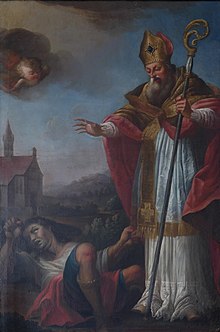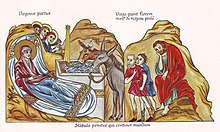Halloween theme by DDC
Download: Halloween_2.p3t
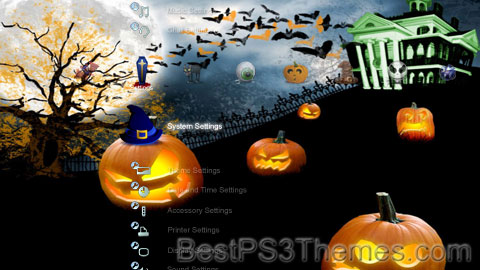
(6 backgrounds)
| Halloween | |
|---|---|
 Carving a jack-o'-lantern is a common Halloween tradition. | |
| Also called |
|
| Observed by | Western Christians and many non-Christians around the world[1] |
| Type | Christian, cultural |
| Significance | First day of Allhallowtide[2][3] |
| Celebrations | Trick-or-treating, costume parties, making jack-o'-lanterns, lighting bonfires, divination, apple bobbing, visiting haunted attractions |
| Observances | Church services,[4] prayer,[5] fasting,[1] vigil[6] |
| Date | 31 October |
| Related to | Samhain, Hop-tu-Naa, Calan Gaeaf, Allantide, Day of the Dead, Reformation Day, All Saints' Day, Mischief Night (cf. vigil) |
Halloween or Hallowe'en[7][8] (less commonly known as Allhalloween,[9] All Hallows' Eve,[10] or All Saints' Eve)[11] is a celebration observed in many countries on 31 October, the eve of the Western Christian feast of All Hallows' Day. It is at the beginning of the observance of Allhallowtide,[12] the time in the liturgical year dedicated to remembering the dead, including saints (hallows), martyrs, and all the faithful departed.[3][13][14][15] In popular culture, the day has become a celebration of horror, being associated with the macabre and supernatural.[16]
One theory holds that many Halloween traditions were influenced by Celtic harvest festivals, particularly the Gaelic festival Samhain, which are believed to have pagan roots.[17][18][19][20] Some go further and suggest that Samhain may have been Christianized as All Hallow's Day, along with its eve, by the early Church.[21] Other academics believe Halloween began solely as a Christian holiday, being the vigil of All Hallow's Day.[22][23][24][25] Celebrated in Ireland and Scotland for centuries, Irish and Scottish immigrants took many Halloween customs to North America in the 19th century,[26][27] and then through American influence various Halloween customs spread to other countries by the late 20th and early 21st century.[16][28]
Popular Halloween activities include trick-or-treating (or the related guising and souling), attending Halloween costume parties, carving pumpkins or turnips into jack-o'-lanterns, lighting bonfires, apple bobbing, divination games, playing pranks, visiting haunted attractions, telling scary stories, and watching horror or Halloween-themed films.[29] Some people practice the Christian observances of All Hallows' Eve, including attending church services and lighting candles on the graves of the dead,[30][31][32] although it is a secular celebration for others.[33][34][35] Some Christians historically abstained from meat on All Hallows' Eve, a tradition reflected in the eating of certain vegetarian foods on this vigil day, including apples, potato pancakes, and soul cakes.[36][37][38][39]
Etymology[edit]

The word Halloween or Hallowe'en ("Saints' evening"[40]) is of Christian origin;[41][42] a term equivalent to "All Hallows Eve" is attested in Old English.[43] The word hallowe[']en comes from the Scottish form of All Hallows' Eve (the evening before All Hallows' Day):[44] even is the Scots term for "eve" or "evening",[45] and is contracted to e'en or een;[46] (All) Hallow(s) E(v)en became Hallowe'en.
History[edit]
Christian origins and historic customs[edit]
Halloween is thought to have influences from Christian beliefs and practices.[47][23] The English word 'Halloween' comes from "All Hallows' Eve", being the evening before the Christian holy days of All Hallows' Day (All Saints' Day) on 1 November and All Souls' Day on 2 November.[48] Since the time of the early Church,[49] major feasts in Christianity (such as Christmas, Easter and Pentecost) had vigils that began the night before, as did the feast of All Hallows'.[50][47] These three days are collectively called Allhallowtide and are a time when Western Christians honour all saints and pray for recently departed souls who have yet to reach Heaven. Commemorations of all saints and martyrs were held by several churches on various dates, mostly in springtime.[51] In 4th-century Roman Edessa it was held on 13 May, and on 13 May 609, Pope Boniface IV re-dedicated the Pantheon in Rome to "St Mary and all martyrs".[52] This was the date of Lemuria, an ancient Roman festival of the dead.[53]
In the 8th century, Pope Gregory III (731–741) founded an oratory in St Peter's for the relics "of the holy apostles and of all saints, martyrs and confessors".[47][54] Some sources say it was dedicated on 1 November,[55] while others say it was on Palm Sunday in April 732.[56][57] By 800, there is evidence that churches in Ireland[58] and Northumbria were holding a feast commemorating all saints on 1 November.[59] Alcuin of Northumbria, a member of Charlemagne's court, may then have introduced this 1 November date in the Frankish Empire.[60] In 835, it became the official date in the Frankish Empire.[59] Some suggest this was due to Celtic influence, while others suggest it was a Germanic idea,[59] although it is claimed that both Germanic and Celtic-speaking peoples commemorated the dead at the beginning of winter.[61] They may have seen it as the most fitting time to do so, as it is a time of 'dying' in nature.[59][61] It is also suggested the change was made on the "practical grounds that Rome in summer could not accommodate the great number of pilgrims who flocked to it", and perhaps because of public health concerns over Roman Fever, which claimed a number of lives during Rome's sultry summers.[62][47]
By the end of the 12th century, the celebration had become known as the holy days of obligation in Western Christianity and involved such traditions as ringing church bells for souls in purgatory. It was also "customary for criers dressed in black to parade the streets, ringing a bell of mournful sound and calling on all good Christians to remember the poor souls".[64] The Allhallowtide custom of baking and sharing soul cakes for all christened souls,[65] has been suggested as the origin of trick-or-treating.[66] The custom dates back at least as far as the 15th century[67] and was found in parts of England, Wales, Flanders, Bavaria and Austria.[68] Groups of poor people, often children, would go door-to-door during Allhallowtide, collecting soul cakes, in exchange for praying for the dead, especially the souls of the givers' friends and relatives. This was called "souling".[67][69][70] Soul cakes were also offered for the souls themselves to eat,[68] or the 'soulers' would act as their representatives.[71] As with the Lenten tradition of hot cross buns, soul cakes were often marked with a cross, indicating they were baked as alms.[72] Shakespeare mentions souling in his comedy The Two Gentlemen of Verona (1593).[73] While souling, Christians would carry "lanterns made of hollowed-out turnips", which could have originally represented souls of the dead;[74][75] jack-o'-lanterns were used to ward off evil spirits.[76][77] On All Saints' and All Souls' Day during the 19th century, candles were lit in homes in Ireland,[78] Flanders, Bavaria, and in Tyrol, where they were called "soul lights",[79] that served "to guide the souls back to visit their earthly homes".[80] In many of these places, candles were also lit at graves on All Souls' Day.[79] In Brittany, libations of milk were poured on the graves of kinfolk,[68] or food would be left overnight on the dinner table for the returning souls;[79] a custom also found in Tyrol and parts of Italy.[81][79]
Christian minister Prince Sorie Conteh linked the wearing of costumes to the belief in vengeful ghosts: "It was traditionally believed that the souls of the departed wandered the earth until All Saints' Day, and All Hallows' Eve provided one last chance for the dead to gain vengeance on their enemies before moving to the next world. In order to avoid being recognized by any soul that might be seeking such vengeance, people would don masks or costumes".[82] In the Middle Ages, churches in Europe that were too poor to display relics of martyred saints at Allhallowtide let parishioners dress up as saints instead.[83][84] Some Christians observe this custom at Halloween today.[85] Lesley Bannatyne believes this could have been a Christianization of an earlier pagan custom.[86] Many Christians in mainland Europe, especially in France, believed "that once a year, on Hallowe'en, the dead of the churchyards rose for one wild, hideous carnival" known as the danse macabre, which was often depicted in church decoration.[87] Christopher Allmand and Rosamond McKitterick write in The New Cambridge Medieval History that the danse macabre urged Christians "not to forget the end of all earthly things".[88] The danse macabre was sometimes enacted in European village pageants and court masques, with people "dressing up as corpses from various strata of society", and this may be the origin of Halloween costume parties.[89][90][91][74]
In Britain, these customs came under attack during the Reformation, as Protestants berated purgatory as a "popish" doctrine incompatible with the Calvinist doctrine of predestination. State-sanctioned ceremonies associated with the intercession of saints and prayer for souls in purgatory were abolished during the Elizabethan reform, though All Hallow's Day remained in the English liturgical calendar to "commemorate saints as godly human beings".[92] For some Nonconformist Protestants, the theology of All Hallows' Eve was redefined; "souls cannot be journeying from Purgatory on their way to Heaven, as Catholics frequently believe and assert. Instead, the so-called ghosts are thought to be in actuality evil spirits".[93] Other Protestants believed in an intermediate state known as Hades (Bosom of Abraham).[94] In some localities, Catholics and Protestants continued souling, candlelit processions, or ringing church bells for the dead;[48][95] the Anglican church eventually suppressed this bell-ringing.[96] Mark Donnelly, a professor of medieval archaeology, and historian Daniel Diehl write that "barns and homes were blessed to protect people and livestock from the effect of witches, who were believed to accompany the malignant spirits as they traveled the earth".[97] After 1605, Hallowtide was eclipsed in England by Guy Fawkes Night (5 November), which appropriated some of its customs.[98] In England, the ending of official ceremonies related to the intercession of saints led to the development of new, unofficial Hallowtide customs. In 18th–19th century rural Lancashire, Catholic families gathered on hills on the night of All Hallows' Eve. One held a bunch of burning straw on a pitchfork while the rest knelt around him, praying for the souls of relatives and friends until the flames went out. This was known as teen'lay.[99] There was a similar custom in Hertfordshire, and the lighting of 'tindle' fires in Derbyshire.[100] Some suggested these 'tindles' were originally lit to "guide the poor souls back to earth".[101] In Scotland and Ireland, old Allhallowtide customs that were at odds with Reformed teaching were not suppressed as they "were important to the life cycle and rites of passage of local communities" and curbing them would have been difficult.[26]
In parts of Italy until the 15th century, families left a meal out for the ghosts of relatives, before leaving for church services.[81] In 19th-century Italy, churches staged "theatrical re-enactments of scenes from the lives of the saints" on All Hallow's Day, with "participants represented by realistic wax figures".[81] In 1823, the graveyard of Holy Spirit Hospital in Rome presented a scene in which bodies of those who recently died were arrayed around a wax statue of an angel who pointed upward towards heaven.[81] In the same country, "parish priests went house-to-house, asking for small gifts of food which they shared among themselves throughout that night".[81] In Spain, they continue to bake special pastries called "bones of the holy" (Spanish: Huesos de Santo) and set them on graves.[102] At cemeteries in Spain and France, as well as in Latin America, priests lead Christian processions and services during Allhallowtide, after which people keep an all night vigil.[103] In 19th-century San Sebastián, there was a procession to the city cemetery at Allhallowtide, an event that drew beggars who "appeal[ed] to the tender recollections of one's deceased relations and friends" for sympathy.[104]
Gaelic folk influence[edit]

Today's Halloween customs are thought to have been influenced by folk customs and beliefs from the Celtic-speaking countries, some of which are believed to have pagan roots.[105] Jack Santino, a folklorist, writes that "there was throughout Ireland an uneasy truce existing between customs and beliefs associated with Christianity and those associated with religions that were Irish before Christianity arrived".[106] The origins of Halloween customs are typically linked to the Gaelic festival Samhain.[107]
Samhain is one of the quarter days in the medieval Gaelic calendar and has been celebrated on 31 October – 1 November[108] in Ireland, Scotland and the Isle of Man.[109][110] A kindred festival has been held by the Brittonic Celts, called Calan Gaeaf in Wales, Kalan Gwav in Cornwall and Kalan Goañv in Brittany; a name meaning "first day of winter". For the Celts, the day ended and began at sunset; thus the festival begins the evening before 1 November by modern reckoning.[111] Samhain is mentioned in some of the earliest Irish literature. The names have been used by historians to refer to Celtic Halloween customs up until the 19th century,[112] and are still the Gaelic and Welsh names for Halloween.

Samhain marked the end of the harvest season and beginning of winter or the 'darker half' of the year.[114][115] It was seen as a liminal time, when the boundary between this world and the Otherworld thinned. This meant the Aos Sí, the 'spirits' or 'fairies', could more easily come into this world and were particularly active.[116][117] Most scholars see them as "degraded versions of ancient gods [...] whose power remained active in the people's minds even after they had been officially replaced by later religious beliefs".[118] They were both respected and feared, with individuals often invoking the protection of God when approaching their dwellings.[119][120] At Samhain, the Aos Sí were appeased to ensure the people and livestock survived the winter. Offerings of food and drink, or portions of the crops, were left outside for them.[121][122][123] The souls of the dead were also said to revisit their homes seeking hospitality.[124] Places were set at the dinner table and by the fire to welcome them.[125] The belief that the souls of the dead return home on one night of the year and must be appeased seems to have ancient origins and is found in many cultures.[68] In 19th century Ireland, "candles would be lit and prayers formally offered for the souls of the dead. After this the eating, drinking, and games would begin".[126]
Throughout Ireland and Britain, especially in the Celtic-speaking regions, the household festivities included divination rituals and games intended to foretell one's future, especially regarding death and marriage.[127] Apples and nuts were often used, and customs included apple bobbing, nut roasting, scrying or mirror-gazing, pouring molten lead or egg whites into water, dream interpretation, and others.[128] Special bonfires were lit and there were rituals involving them. Their flames, smoke, and ashes were deemed to have protective and cleansing powers.[114] In some places, torches lit from the bonfire were carried sunwise around homes and fields to protect them.[112] It is suggested the fires were a kind of imitative or sympathetic magic – they mimicked the Sun and held back the decay and darkness of winter.[125][129][130] They were also used for divination and to ward off evil spirits.[76] In Scotland, these bonfires and divination games were banned by the church elders in some parishes.[131] In Wales, bonfires were also lit to "prevent the souls of the dead from falling to earth".[132] Later, these bonfires "kept away the
Valentine’s Day theme by LILJONATL Download: ValentinesDay_2.p3t
Valentine's Day, also called Saint Valentine's Day or the Feast of Saint Valentine,[1] is celebrated annually on February 14.[2] It originated as a Christian feast day honoring a martyr named Valentine, and through later folk traditions it has also become a significant cultural, religious and commercial celebration of romance and love in many regions of the world.[3][4]
There are a number of martyrdom stories associated with various Saint Valentines connected to February 14,[5] including an account of the imprisonment of Saint Valentine of Rome for ministering to Christians persecuted under the Roman Empire in the third century.[6][7] According to an early tradition, Saint Valentine restored sight to the blind daughter of his jailer.[8] Numerous later additions to the legend have better related it to the theme of love: tradition maintains that Saint Valentine performed weddings for Christian soldiers who were forbidden to marry by the Roman emperor;[7] an 18th-century embellishment to the legend claims he wrote the jailer's daughter a letter signed "Your Valentine" as a farewell before his execution.[9]
The 8th-century Gelasian Sacramentary recorded the celebration of the Feast of Saint Valentine on February 14.[10][11] The day became associated with romantic love in the 14th and 15th centuries, when notions of courtly love flourished, apparently by association with the "lovebirds" of early spring. In 18th-century England, it grew into an occasion for couples to express their love for each other by presenting flowers, offering confectionery, and sending greeting cards (known as "valentines"). Valentine's Day symbols that are used today include the heart-shaped outline, doves, and the figure of the winged Cupid. In the 19th century, handmade cards gave way to mass-produced greetings.[12] In Italy, Saint Valentine's keys are given to lovers "as a romantic symbol and an invitation to unlock the giver's heart", as well as to children to ward off epilepsy (called Saint Valentine's Malady).[13]
Saint Valentine's Day is not a public holiday in any country, although it is an official feast day in the Anglican Communion[14] and the Lutheran Church.[15] Many parts of the Eastern Orthodox Church also celebrate Saint Valentine's Day on July 6 in honor of Roman presbyter Saint Valentine, and on July 30 in honor of Hieromartyr Valentine, the Bishop of Interamna (modern Terni).[16]
Numerous early Christian martyrs were named Valentine.[17] The Valentines honored on February 14 are Valentine of Rome (Valentinus presb. m. Romae) and Valentine of Terni (Valentinus ep. Interamnensis m. Romae).[18] Valentine of Rome was a priest in Rome who was martyred in 269 and was buried on the Via Flaminia. The relics of Saint Valentine were kept in the Church and Catacombs of San Valentino in Rome, which "remained an important pilgrim site throughout the Middle Ages until the relics of Saint Valentine were transferred to the church of Santa Prassede during the pontificate of Nicholas IV [1288–1292]".[19][20] The flower-crowned skull of Saint Valentine is exhibited in the Basilica of Santa Maria in Cosmedin, Rome. Other relics are found at Whitefriar Street Carmelite Church in Dublin, Ireland.[21]
Valentine of Terni became bishop of Interamna (now Terni, in central Italy) and is said to have been martyred during the persecution under Emperor Aurelian in 273. He is buried on the Via Flaminia, but in a different location from Valentine of Rome. His relics are at the Basilica of Saint Valentine in Terni (Basilica di San Valentino). Professor Jack B. Oruch of the University of Kansas notes that "abstracts of the acts of the two saints were in nearly every church and monastery of Europe."[22] A relic claimed to be Saint Valentine of Terni's head was preserved in the abbey of New Minster, Winchester, and venerated.[23]
The Catholic Encyclopedia speaks of a third saint named Valentine who was mentioned in early martyrologies under date of February 14. He was martyred in Africa with a number of companions, but nothing more is known about him.[24]
February 14 is celebrated as Saint Valentine's Day in various Christian denominations; it has, for example, the rank of "commemoration" in the calendar of saints in the Anglican Communion.[14] The feast day of Saint Valentine is given in the calendar of saints of the Lutheran Church.[15] In the 1969 revision of the Roman Catholic Calendar of Saints, the feast day of Saint Valentine on February 14 was relegated from the General Roman Calendar to particular (local or even national) calendars for the following reason: "Though the memorial of Saint Valentine is ancient, it is left to particular calendars, since, apart from his name, nothing is known of Saint Valentine except that he was buried on the Via Flaminia on February 14."[25] Therefore, as he remains within the Roman Martyrology, he may be recognised optionally during mass outside of Christmastide and Eastertide.[26]
The feast day is still celebrated in Balzan (Malta), where relics of the saint are claimed to be found, and also throughout the world by Traditionalist Catholics who follow the older, pre-Second Vatican Council calendar (see General Roman Calendar of 1960).
In the Eastern Orthodox Church, Saint Valentine is recognized on July 6, on which Saint Valentine, the Roman presbyter, is honoured; in addition, the Eastern Orthodox Church observes the feast of Hieromartyr Valentine, Bishop of Interamna, on July 30.[27][28][29]
J.C. Cooper, in The Dictionary of Christianity, writes that Saint Valentine was "a priest of Rome who was imprisoned for succouring persecuted Christians."[30] Contemporary records of Saint Valentine were most probably destroyed during this Diocletianic Persecution in the early 4th century.[31] In the 5th or 6th century, a work called Passio Marii et Marthae published a story of martyrdom for Saint Valentine of Rome, perhaps by borrowing tortures that happened to other saints, as was usual in the literature of that period.[31][32]
The same events are found in Bede's Martyrology, which was compiled in the 8th century.[31][32] It states that Saint Valentine was persecuted as a Christian and interrogated by Roman Emperor Claudius II in person. Claudius was impressed by Valentine and had a discussion with him, attempting to get him to convert to Roman paganism in order to save his life. Valentine refused and tried to convert Claudius to Christianity instead. Because of this, he was executed. Before his execution, he is reported to have performed a miracle by healing Julia, the blind daughter of his jailer Asterius. The jailer's daughter and his forty-six member household, family members and servants, came to believe in Jesus and were baptized.[33][31]
A later Passio repeated the legend, adding that Pope Julius I built a church over his sepulchre (it is a confusion with a 4th-century tribune called Valentino, who donated land to build a church at a time when Julius was a Pope).[32] The legend was picked up as fact by later martyrologies, starting with Bede's martyrology in the 8th century.[32] It was repeated in the 13th century, in The Golden Legend.[34]
There is an additional embellishment to The Golden Legend, which according to Henry Ansgar Kelly, was added in the 18th century and widely repeated.[35] On the evening before Valentine was to be executed, he is supposed to have written the first "valentine" card himself, addressed to the daughter of his jailer Asterius, who was no longer blind, signing as "Your Valentine."[35] The expression "From your Valentine" was later adopted by modern Valentine letters.[36] This legend has been published by both American Greetings and The History Channel.[37]
John Foxe, a 16th-century English historian, and the Order of Carmelites state that Saint Valentine was buried in the Church of Saint Praxedes in Rome, located near the cemetery of Saint Hippolytus. This order says that according to legend, "Julia herself planted a pink-blossomed almond tree near his grave. Today, the almond tree remains a symbol of abiding love and friendship."[38][39]
Another embellishment suggests that Saint Valentine performed clandestine Christian weddings for soldiers who were forbidden to marry.[40] The Roman Emperor Claudius II supposedly forbade this in order to grow his army, believing that married men did not make for good soldiers.[40][41] However, George Monger writes that this marriage ban was never issued and that Claudius II told his soldiers to take two or three women for themselves after his victory over the Goths.[42]
According to legend, in order "to remind these men of their vows and God's love, Saint Valentine is said to have cut hearts from parchment", giving them to these soldiers and persecuted Christians, a possible origin of the widespread use of hearts on Saint Valentine's Day.[43]
Saint Valentine supposedly wore a purple amethyst ring, customarily worn on the hands of Christian bishops with an image of Cupid engraved in it, a recognizable symbol associated with love that was legal under the Roman Empire;[41][44] Roman soldiers would recognize the ring and ask him to perform marriage for them.[41] Probably due to the association with Saint Valentine, amethyst has become the birthstone of February, which is thought to attract love.[45]
While the European folk traditions connected with Saint Valentine and Saint Valentine's Day have become marginalized by modern customs connecting the day with romantic love, there are still some connections with the advent of spring.
While the custom of sending cards, flowers, chocolates and other gifts originated in the UK, Valentine's Day still remains connected with various regional customs in England. In Norfolk, a character called "Jack" Valentine knocks on the rear door of houses, leaving sweets and presents for children. Although he was leaving treats, many children were scared of this mystical person.[46][47]
In Slovenia, Saint Valentine or Zdravko was one of the saints of spring, the saint of good health and the patron of beekeepers and pilgrims.[48]
A proverb says that "Saint Valentine brings the keys of roots". Plants and flowers start to grow on this day. It has been celebrated as the day when the first work in the vineyards and in the fields commences. It is also said that birds propose to each other or marry on that day. Another proverb says "Valentin – prvi spomladin" ("Valentine – the first spring saint"), as in some places (especially White Carniola), Saint Valentine marks the beginning of spring.[49] Valentine's Day has only recently been celebrated as the day of love. The day of love was traditionally March 12, Saint Gregory's day, or February 22, Saint Vincent's Day. The patron of love was Saint Anthony, whose day has been celebrated on June 13.[48]
The "Feast" (Latin: "in natali", lit.: on the birthday) of Saint Valentine originated in Christendom and has been marked by the Western Church of Christendom in honour of one of the Christian martyrs named Valentine, as recorded in the 8th-century Gelasian Sacramentary.[22][11] In Ancient Rome, Lupercalia was observed February 13–15 on behalf of Pan and Juno, pagan gods of love, marriage and fertility. It was a rite connected to purification and health, and had only slight connection to fertility (as a part of health) and none to love. The celebration of Saint Valentine is not known to have had any romantic connotations until Chaucer's poetry about "Valentine's Day" in the 14th century, some seven hundred years after celebration of Lupercalia is believed to have ceased.[31]
Lupercalia was a festival local to the city of Rome. The more general Festival of Juno Februa, meaning "Juno the purifier" or "the chaste Juno", was celebrated on February 13–14. Although the Pope Gelasius I (492–496) article in the Catholic Encyclopedia says that he abolished Lupercalia, theologian and Methodist minister Bruce Forbes wrote that "no evidence" has been demonstrated to link Saint Valentine's Day and the rites of the ancient Roman purification festival of Lupercalia, despite claims by many authors to the contrary.[notes 2][23][50][51]
Some researchers have theorized that Gelasius I replaced Lupercalia with the celebration of the Purification of the Blessed Virgin Mary and claim a connection to the 14th century's connotations of romantic love, but there is no historical indication that he ever intended such a thing.[notes 3][51][52] Also, the dates do not fit because at the time of Gelasius I, the feast was only celebrated in Jerusalem, and it was on February 14 only because Jerusalem placed the Nativity of Jesus (Christmas) on January 6.[notes 4] Although it was called "Purification of the Blessed Virgin Mary", it also dealt with the presentation of Jesus at the temple.[53] Jerusalem's Purification of the Blessed Virgin Mary on February 14 became the Presentation of Jesus at the Temple on February 2 as it was introduced to Rome and other places in the sixth century, after Gelasius I's time.[53]
Alban Butler in his The Lives of the Fathers, Martyrs, and Other Principal Saints (1756–1759) claimed without proof that boys and girls in Lupercalia drew names from a jar to make couples, and that modern Valentine's letters originated from this custom. In reality, this practice originated in the Middle Ages, with no link to Lupercalia, with boys drawing the names of girls at random to couple with them. This custom was combated by priests, for example by
Season’s Greetings theme by SCEE Download: SeasonsGreetings.p3t Redirect to: Valentine’s Day theme by 1_BAD_SOLDIER Download: ValentinesDay.p3t
Valentine's Day, also called Saint Valentine's Day or the Feast of Saint Valentine,[1] is celebrated annually on February 14.[2] It originated as a Christian feast day honoring a martyr named Valentine, and through later folk traditions it has also become a significant cultural, religious and commercial celebration of romance and love in many regions of the world.[3][4]
There are a number of martyrdom stories associated with various Saint Valentines connected to February 14,[5] including an account of the imprisonment of Saint Valentine of Rome for ministering to Christians persecuted under the Roman Empire in the third century.[6][7] According to an early tradition, Saint Valentine restored sight to the blind daughter of his jailer.[8] Numerous later additions to the legend have better related it to the theme of love: tradition maintains that Saint Valentine performed weddings for Christian soldiers who were forbidden to marry by the Roman emperor;[7] an 18th-century embellishment to the legend claims he wrote the jailer's daughter a letter signed "Your Valentine" as a farewell before his execution.[9]
The 8th-century Gelasian Sacramentary recorded the celebration of the Feast of Saint Valentine on February 14.[10][11] The day became associated with romantic love in the 14th and 15th centuries, when notions of courtly love flourished, apparently by association with the "lovebirds" of early spring. In 18th-century England, it grew into an occasion for couples to express their love for each other by presenting flowers, offering confectionery, and sending greeting cards (known as "valentines"). Valentine's Day symbols that are used today include the heart-shaped outline, doves, and the figure of the winged Cupid. In the 19th century, handmade cards gave way to mass-produced greetings.[12] In Italy, Saint Valentine's keys are given to lovers "as a romantic symbol and an invitation to unlock the giver's heart", as well as to children to ward off epilepsy (called Saint Valentine's Malady).[13]
Saint Valentine's Day is not a public holiday in any country, although it is an official feast day in the Anglican Communion[14] and the Lutheran Church.[15] Many parts of the Eastern Orthodox Church also celebrate Saint Valentine's Day on July 6 in honor of Roman presbyter Saint Valentine, and on July 30 in honor of Hieromartyr Valentine, the Bishop of Interamna (modern Terni).[16]
Numerous early Christian martyrs were named Valentine.[17] The Valentines honored on February 14 are Valentine of Rome (Valentinus presb. m. Romae) and Valentine of Terni (Valentinus ep. Interamnensis m. Romae).[18] Valentine of Rome was a priest in Rome who was martyred in 269 and was buried on the Via Flaminia. The relics of Saint Valentine were kept in the Church and Catacombs of San Valentino in Rome, which "remained an important pilgrim site throughout the Middle Ages until the relics of Saint Valentine were transferred to the church of Santa Prassede during the pontificate of Nicholas IV [1288–1292]".[19][20] The flower-crowned skull of Saint Valentine is exhibited in the Basilica of Santa Maria in Cosmedin, Rome. Other relics are found at Whitefriar Street Carmelite Church in Dublin, Ireland.[21]
Valentine of Terni became bishop of Interamna (now Terni, in central Italy) and is said to have been martyred during the persecution under Emperor Aurelian in 273. He is buried on the Via Flaminia, but in a different location from Valentine of Rome. His relics are at the Basilica of Saint Valentine in Terni (Basilica di San Valentino). Professor Jack B. Oruch of the University of Kansas notes that "abstracts of the acts of the two saints were in nearly every church and monastery of Europe."[22] A relic claimed to be Saint Valentine of Terni's head was preserved in the abbey of New Minster, Winchester, and venerated.[23]
The Catholic Encyclopedia speaks of a third saint named Valentine who was mentioned in early martyrologies under date of February 14. He was martyred in Africa with a number of companions, but nothing more is known about him.[24]
February 14 is celebrated as Saint Valentine's Day in various Christian denominations; it has, for example, the rank of "commemoration" in the calendar of saints in the Anglican Communion.[14] The feast day of Saint Valentine is given in the calendar of saints of the Lutheran Church.[15] In the 1969 revision of the Roman Catholic Calendar of Saints, the feast day of Saint Valentine on February 14 was relegated from the General Roman Calendar to particular (local or even national) calendars for the following reason: "Though the memorial of Saint Valentine is ancient, it is left to particular calendars, since, apart from his name, nothing is known of Saint Valentine except that he was buried on the Via Flaminia on February 14."[25] Therefore, as he remains within the Roman Martyrology, he may be recognised optionally during mass outside of Christmastide and Eastertide.[26]
The feast day is still celebrated in Balzan (Malta), where relics of the saint are claimed to be found, and also throughout the world by Traditionalist Catholics who follow the older, pre-Second Vatican Council calendar (see General Roman Calendar of 1960).
In the Eastern Orthodox Church, Saint Valentine is recognized on July 6, on which Saint Valentine, the Roman presbyter, is honoured; in addition, the Eastern Orthodox Church observes the feast of Hieromartyr Valentine, Bishop of Interamna, on July 30.[27][28][29]
J.C. Cooper, in The Dictionary of Christianity, writes that Saint Valentine was "a priest of Rome who was imprisoned for succouring persecuted Christians."[30] Contemporary records of Saint Valentine were most probably destroyed during this Diocletianic Persecution in the early 4th century.[31] In the 5th or 6th century, a work called Passio Marii et Marthae published a story of martyrdom for Saint Valentine of Rome, perhaps by borrowing tortures that happened to other saints, as was usual in the literature of that period.[31][32]
The same events are found in Bede's Martyrology, which was compiled in the 8th century.[31][32] It states that Saint Valentine was persecuted as a Christian and interrogated by Roman Emperor Claudius II in person. Claudius was impressed by Valentine and had a discussion with him, attempting to get him to convert to Roman paganism in order to save his life. Valentine refused and tried to convert Claudius to Christianity instead. Because of this, he was executed. Before his execution, he is reported to have performed a miracle by healing Julia, the blind daughter of his jailer Asterius. The jailer's daughter and his forty-six member household, family members and servants, came to believe in Jesus and were baptized.[33][31]
A later Passio repeated the legend, adding that Pope Julius I built a church over his sepulchre (it is a confusion with a 4th-century tribune called Valentino, who donated land to build a church at a time when Julius was a Pope).[32] The legend was picked up as fact by later martyrologies, starting with Bede's martyrology in the 8th century.[32] It was repeated in the 13th century, in The Golden Legend.[34]
There is an additional embellishment to The Golden Legend, which according to Henry Ansgar Kelly, was added in the 18th century and widely repeated.[35] On the evening before Valentine was to be executed, he is supposed to have written the first "valentine" card himself, addressed to the daughter of his jailer Asterius, who was no longer blind, signing as "Your Valentine."[35] The expression "From your Valentine" was later adopted by modern Valentine letters.[36] This legend has been published by both American Greetings and The History Channel.[37]
John Foxe, a 16th-century English historian, and the Order of Carmelites state that Saint Valentine was buried in the Church of Saint Praxedes in Rome, located near the cemetery of Saint Hippolytus. This order says that according to legend, "Julia herself planted a pink-blossomed almond tree near his grave. Today, the almond tree remains a symbol of abiding love and friendship."[38][39]
Another embellishment suggests that Saint Valentine performed clandestine Christian weddings for soldiers who were forbidden to marry.[40] The Roman Emperor Claudius II supposedly forbade this in order to grow his army, believing that married men did not make for good soldiers.[40][41] However, George Monger writes that this marriage ban was never issued and that Claudius II told his soldiers to take two or three women for themselves after his victory over the Goths.[42]
According to legend, in order "to remind these men of their vows and God's love, Saint Valentine is said to have cut hearts from parchment", giving them to these soldiers and persecuted Christians, a possible origin of the widespread use of hearts on Saint Valentine's Day.[43]
Saint Valentine supposedly wore a purple amethyst ring, customarily worn on the hands of Christian bishops with an image of Cupid engraved in it, a recognizable symbol associated with love that was legal under the Roman Empire;[41][44] Roman soldiers would recognize the ring and ask him to perform marriage for them.[41] Probably due to the association with Saint Valentine, amethyst has become the birthstone of February, which is thought to attract love.[45]
While the European folk traditions connected with Saint Valentine and Saint Valentine's Day have become marginalized by modern customs connecting the day with romantic love, there are still some connections with the advent of spring.
While the custom of sending cards, flowers, chocolates and other gifts originated in the UK, Valentine's Day still remains connected with various regional customs in England. In Norfolk, a character called "Jack" Valentine knocks on the rear door of houses, leaving sweets and presents for children. Although he was leaving treats, many children were scared of this mystical person.[46][47]
In Slovenia, Saint Valentine or Zdravko was one of the saints of spring, the saint of good health and the patron of beekeepers and pilgrims.[48]
A proverb says that "Saint Valentine brings the keys of roots". Plants and flowers start to grow on this day. It has been celebrated as the day when the first work in the vineyards and in the fields commences. It is also said that birds propose to each other or marry on that day. Another proverb says "Valentin – prvi spomladin" ("Valentine – the first spring saint"), as in some places (especially White Carniola), Saint Valentine marks the beginning of spring.[49] Valentine's Day has only recently been celebrated as the day of love. The day of love was traditionally March 12, Saint Gregory's day, or February 22, Saint Vincent's Day. The patron of love was Saint Anthony, whose day has been celebrated on June 13.[48]
The "Feast" (Latin: "in natali", lit.: on the birthday) of Saint Valentine originated in Christendom and has been marked by the Western Church of Christendom in honour of one of the Christian martyrs named Valentine, as recorded in the 8th-century Gelasian Sacramentary.[22][11] In Ancient Rome, Lupercalia was observed February 13–15 on behalf of Pan and Juno, pagan gods of love, marriage and fertility. It was a rite connected to purification and health, and had only slight connection to fertility (as a part of health) and none to love. The celebration of Saint Valentine is not known to have had any romantic connotations until Chaucer's poetry about "Valentine's Day" in the 14th century, some seven hundred years after celebration of Lupercalia is believed to have ceased.[31]
Lupercalia was a festival local to the city of Rome. The more general Festival of Juno Februa, meaning "Juno the purifier" or "the chaste Juno", was celebrated on February 13–14. Although the Pope Gelasius I (492–496) article in the Catholic Encyclopedia says that he abolished Lupercalia, theologian and Methodist minister Bruce Forbes wrote that "no evidence" has been demonstrated to link Saint Valentine's Day and the rites of the ancient Roman purification festival of Lupercalia, despite claims by many authors to the contrary.[notes 2][23][50][51]
Some researchers have theorized that Gelasius I replaced Lupercalia with the celebration of the Purification of the Blessed Virgin Mary and claim a connection to the 14th century's connotations of romantic love, but there is no historical indication that he ever intended such a thing.[notes 3][51][52] Also, the dates do not fit because at the time of Gelasius I, the feast was only celebrated in Jerusalem, and it was on February 14 only because Jerusalem placed the Nativity of Jesus (Christmas) on January 6.[notes 4] Although it was called "Purification of the Blessed Virgin Mary", it also dealt with the presentation of Jesus at the temple.[53] Jerusalem's Purification of the Blessed Virgin Mary on February 14 became the Presentation of Jesus at the Temple on February 2 as it was introduced to Rome and other places in the sixth century, after Gelasius I's time.[53]
Alban Butler in his The Lives of the Fathers, Martyrs, and Other Principal Saints (1756–1759) claimed without proof that boys and girls in Lupercalia drew names from a jar to make couples, and that modern Valentine's letters originated from this custom. In reality, this practice originated in the Middle Ages, with no link to Lupercalia, with boys drawing the names of girls at random to couple with them. This custom was combated by priests, for example by
Playing Xmas theme by Yazuka Download: PlayingXmas.p3t P3T Unpacker v0.12 This program unpacks Playstation 3 Theme files (.p3t) so that you can touch-up an existing theme to your likings or use a certain wallpaper from it (as many themes have multiple). But remember, if you use content from another theme and release it, be sure to give credit! Download for Windows: p3textractor.zip Instructions: Download p3textractor.zip from above. Extract the files to a folder with a program such as WinZip or WinRAR. Now there are multiple ways to extract the theme. The first way is to simply open the p3t file with p3textractor.exe. If you don’t know how to do this, right click the p3t file and select Open With. Alternatively, open the p3t file and it will ask you to select a program to open with. Click Browse and find p3textractor.exe from where you previously extracted it to. It will open CMD and extract the theme to extracted.[filename]. After that, all you need to do for any future p3t files is open them and it will extract. The second way is very simple. Just drag the p3t file to p3textractor.exe. It will open CMD and extract the theme to extracted.[filename]. For the third way, first put the p3t file you want to extract into the same folder as p3textractor.exe. Open CMD and browse to the folder with p3extractor.exe. Enter the following: Christmas theme by Shawn Download: Christmas_2.p3t
Christmas is an annual festival commemorating the birth of Jesus Christ, observed primarily on December 25[a] as a religious and cultural celebration among billions of people around the world.[2][3][4] A feast central to the liturgical year in Christianity, it follows the season of Advent (which begins four Sundays before) or the Nativity Fast, and initiates the season of Christmastide, which historically in the West lasts twelve days and culminates on Twelfth Night.[5] Christmas Day is a public holiday in many countries,[6][7][8] is celebrated religiously by a majority of Christians,[9] as well as culturally by many non-Christians,[1][10] and forms an integral part of the holiday season surrounding it.
The traditional Christmas narrative recounted in the New Testament, known as the Nativity of Jesus, says that Jesus was born in Bethlehem, in accordance with messianic prophecies.[11] When Joseph and Mary arrived in the city, the inn had no room, and so they were offered a stable where the Christ Child was soon born, with angels proclaiming this news to shepherds, who then spread the word.[12]
There are different hypotheses regarding the date of Jesus's birth, and in the early fourth century, the church fixed the date as December 25.[b][13][14][15] This corresponds to the traditional date of the winter solstice on the Roman calendar.[16] It is exactly nine months after Annunciation on March 25, also the date of the spring equinox.[17] Most Christians celebrate on December 25 in the Gregorian calendar, which has been adopted almost universally in the civil calendars used in countries throughout the world. However, part of the Eastern Christian Churches celebrate Christmas on December 25 of the older Julian calendar, which currently corresponds to January 7 in the Gregorian calendar. For Christians, believing that God came into the world in the form of man to atone for the sins of humanity rather than knowing Jesus's exact birth date is considered to be the primary purpose of celebrating Christmas.[18][19][20]
The customs associated with Christmas in various countries have a mix of pre-Christian, Christian, and secular themes and origins.[21][22] Popular holiday traditions include gift giving; completing an Advent calendar or Advent wreath; Christmas music and caroling; watching Christmas movies; viewing a Nativity play; an exchange of Christmas cards; attending church services; a special meal; and displaying various Christmas decorations, including Christmas trees, Christmas lights, nativity scenes, garlands, wreaths, mistletoe, and holly. Additionally, several related and often interchangeable figures, known as Santa Claus, Father Christmas, Saint Nicholas, and Christkind, are associated with bringing gifts to children during the Christmas season and have their own body of traditions and lore.[23] Because gift-giving and many other aspects of the Christmas festival involve heightened economic activity, the holiday has become a significant event and a key sales period for retailers and businesses. Over the past few centuries, Christmas has had a steadily growing economic effect in many regions of the world.
The English word Christmas is a shortened form of 'Christ's Mass'.[24] The word is recorded as Crīstesmæsse in 1038 and Cristes-messe in 1131.[25] Crīst (genitive Crīstes) is from the Greek Χριστός (Khrīstos, 'Christ'), a translation of the Hebrew מָשִׁיחַ (Māšîaḥ, 'Messiah'), meaning 'anointed';[26][27] and mæsse is from the Latin missa, the celebration of the Eucharist.[28]
The form Christenmas was also used during some periods, but is now considered archaic and dialectal.[29] The term derives from Middle English Cristenmasse, meaning 'Christian mass'.[30] Xmas is an abbreviation of Christmas found particularly in print, based on the initial letter chi (Χ) in the Greek Χριστός, although some style guides discourage its use.[31] This abbreviation has precedent in Middle English Χρ̄es masse (where Χρ̄ is another abbreviation of the Greek word).[30]
The holiday has had various other English names throughout its history. The Anglo-Saxons referred to the feast as "midwinter",[32][33] or, more rarely, as Nātiuiteð (from the Latin nātīvitās below).[32][34] Nativity, meaning 'birth', is from the Latin nātīvitās.[35] In Old English, Gēola ('Yule') referred to the period corresponding to December and January, which was eventually equated with Christian Christmas.[36] 'Noel' (also 'Nowel' or 'Nowell', as in "The First Nowell") entered English in the late 14th century and is from the Old French noël or naël, itself ultimately from the Latin nātālis (diēs) meaning 'birth (day)'.[37]
Koleda is the traditional Slavic name for Christmas and the period from Christmas to Epiphany or, more generally, to Slavic Christmas-related rituals, some dating to pre-Christian times.[38]
The gospels of Luke and Matthew describe Jesus as being born in Bethlehem to the Virgin Mary. In the Gospel of Luke, Joseph and Mary travel from Nazareth to Bethlehem in order to be counted for a census, and Jesus is born there and placed in a manger.[39] Angels proclaim him a savior for all people, and three shepherds come to adore him. In the Gospel of Matthew, by contrast, three magi follow a star to Bethlehem to bring gifts to Jesus, born the king of the Jews. King Herod orders the massacre of all the boys less than two years old in Bethlehem, but the family flees to Egypt and later returns to Nazareth.[40]
In the 2nd century, the "earliest church records" indicate that "Christians were remembering and celebrating the birth of the Lord", an "observance [that] sprang up organically from the authentic devotion of ordinary believers"; although "they did not agree upon a set date".[41] The earliest evidence of Christ's birth being marked on December 25 is a sentence in the Chronograph of 354.[42][43][44][45] Liturgical historians generally agree that this part of the text was written in Rome in AD 336.[43] Though Christmas did not appear on the lists of festivals given by the early Christian writers Irenaeus and Tertullian,[25] the early Church Fathers John Chrysostom, Augustine of Hippo, and Jerome attested to December 25 as the date of Christmas toward the end of the fourth century.[41] December 25 was the traditional date of the winter solstice in the Roman Empire,[46] where most Christians lived, and the Roman festival Dies Natalis Solis Invicti (birthday of Sol Invictus, the 'Invincible Sun') had been held on this date since 274 AD.[47]
In the East, the birth of Jesus was celebrated in connection with the Epiphany on January 6.[48][49] This holiday was not primarily about Christ's birth, but rather his baptism.[50] Christmas was promoted in the East as part of the revival of Orthodox Christianity that followed the death of the pro-Arian Emperor Valens at the Battle of Adrianople in 378. The feast was introduced in Constantinople in 379, in Antioch by John Chrysostom towards the end of the fourth century,[49] probably in 388, and in Alexandria in the following century.[51] The Georgian Iadgari demonstrates that Christmas was celebrated in Jerusalem by the sixth century.[52]
In the Early Middle Ages, Christmas Day was overshadowed by Epiphany, which in western Christianity focused on the visit of the magi. However, the medieval calendar was dominated by Christmas-related holidays. The forty days before Christmas became the "forty days of St. Martin" (which began on November 11, the feast of St. Martin of Tours), now known as Advent.[53] In Italy, former Saturnalian traditions were attached to Advent.[53] Around the 12th century, these traditions transferred again to the Twelve Days of Christmas (December 25 – January 5); a time that appears in the liturgical calendars as Christmastide or Twelve Holy Days.[53]
In 567, the Council of Tours put in place the season of Christmastide, proclaiming "the twelve days from Christmas to Epiphany as a sacred and festive season, and established the duty of Advent fasting in preparation for the feast."[5][54] This was done in order to solve the "administrative problem for the Roman Empire as it tried to coordinate the solar Julian calendar with the lunar calendars of its provinces in the east."[55][56][57]
The prominence of Christmas Day increased gradually after Charlemagne was crowned Emperor on Christmas Day in 800.[58] King Edmund the Martyr was anointed on Christmas in 855 and King William I of England was crowned on Christmas Day 1066.[59]
By the High Middle Ages, the holiday had become so prominent that chroniclers routinely noted where various magnates celebrated Christmas. King Richard II of England hosted a Christmas feast in 1377 at which 28 oxen and 300 sheep were eaten.[53] The Yule boar was a common feature of medieval Christmas feasts. Caroling also became popular, and was originally performed by a group of dancers who sang. The group was composed of a lead singer and a ring of dancers that provided the chorus. Various writers of the time condemned caroling as lewd, indicating that the unruly traditions of Saturnalia and Yule may have continued in this form.[53] "Misrule"—drunkenness, promiscuity, gambling—was also an important aspect of the festival. In England, gifts were exchanged on New Year's Day, and there was special Christmas ale.[53]
Christmas during the Middle Ages was a public festival that incorporated ivy, holly, and other evergreens.[60] Christmas gift-giving during the Middle Ages was usually between people with legal relationships, such as tenant and landlord.[60] The annual indulgence in eating, dancing, singing, sporting, and card playing escalated in England, and by the 17th century the Christmas season featured lavish dinners, elaborate masques, and pageants. In 1607, King James I insisted that a play be acted on Christmas night and that the court indulge in games.[61] It was during the Reformation in 16th–17th-century Europe that many Protestants changed the gift bringer to the Christ Child or Christkindl, and the date of giving gifts changed from December 6 to Christmas Eve.[62]
Following the Protestant Reformation, many of the new denominations, including the Anglican Church and Lutheran Church, continued to celebrate Christmas.[63] In 1629, the Anglican poet John Milton penned On the Morning of Christ's Nativity, a poem that has since been read by many during Christmastide.[64][65] Donald Heinz, a professor at California State University, states that Martin Luther "inaugurated a period in which Germany would produce a unique culture of Christmas, much copied in North America."[66] Among the congregations of the Dutch Reformed Church, Christmas was celebrated as one of the principal evangelical feasts.[67]
However, in 17th century England, some groups such as the Puritans strongly condemned the celebration of Christmas, considering it a Catholic invention and the "trappings of popery" or the "rags of the Beast".[68] In contrast, the established Anglican Church "pressed for a more elaborate observance of feasts, penitential seasons, and saints' days. The calendar reform became a major point of tension between the Anglican party and the Puritan party."[69] The Catholic Church also responded, promoting the festival in a more religiously oriented form. King Charles I of England directed his noblemen and gentry to return to their landed estates in midwinter to keep up their old-style Christmas generosity.[61] Following the Parliamentarian victory over Charles I during the English Civil War, England's Puritan rulers banned Christmas in 1647.[68][70]
Protests followed as pro-Christmas rioting broke out in several cities and for weeks Canterbury was controlled by the rioters, who decorated doorways with holly and shouted royalist slogans.[68] Football, among the sports the Puritans banned on a Sunday, was also used as a rebellious force: when Puritans outlawed Christmas in England in December 1647 the crowd brought out footballs as a symbol of festive misrule.[71] The book, The Vindication of Christmas (London, 1652), argued against the Puritans, and makes note of Old English Christmas traditions, dinner, roast apples on the fire, card playing, dances with "plow-boys" and "maidservants", old Father Christmas and carol singing.[72] During the ban, semi-clandestine religious services marking Christ's birth continued to be held, and people sang carols in secret.[73]
It was restored as a legal holiday in England with the Restoration of King Charles II in 1660 when Puritan legislation was declared null and void, with Christmas again freely celebrated in England.[73] Many Calvinist clergymen disapproved of Christmas celebration. As such, in Scotland, the Presbyterian Church of Scotland discouraged the observance of Christmas, and though James VI commanded its celebration in 1618, attendance at church was scant.[74] The Parliament of Scotland officially abolished the observance of Christmas in 1640, claiming that the church had been "purged of all superstitious observation of days".[75] Whereas in England, Wales and Ireland Christmas Day is a common law holiday, having been a customary holiday since time immemorial, it was not until 1871 that it was designated a bank holiday in Scotland.[76] Following the Restoration of Charles II, Poor Robin's Almanack contained the lines: "Now thanks to God for Charles return, / Whose absence made old Christmas mourn. / For then we scarcely did it know, / Whether it Christmas were or no."[77] The diary of James Woodforde, from the latter half of the 18th century, details the observance of Christmas and celebrations associated with the season over a number of years.[78]
As in England, Puritans in Colonial America staunchly opposed the observation of Christmas.[79] The Pilgrims of New England pointedly spent their first December 25 in the New World working normally.[79] Puritans such as Cotton Mather condemned Christmas both because scripture did not mention its observance and because Christmas celebrations of the day often involved boisterous behavior.[80][81] Many non-Puritans in New England deplored the loss of the holidays enjoyed by the laboring classes in England.[82] Christmas observance was outlawed in Boston in 1659.[79] The ban on Christmas observance was revoked in 1681 by English governor Edmund Andros, but it was not until the mid-19th century that celebrating Christmas became fashionable in the Boston region.[83]
At the same time, Christian residents of Virginia and New York observed the holiday freely. Pennsylvania Dutch settlers, predominantly Moravian settlers of Bethlehem, Nazareth, and Lititz in Pennsylvania and the Wachovia settlements in North Carolina, were enthusiastic celebrators of Christmas. The Moravians in Bethlehem had the first Christmas trees in America as well as the first Nativity Scenes.[84] Christmas fell out of favor in the United States after the American Revolution, when it was considered an English custom.[85]
George Washington attacked Hessian (German) mercenaries on the day after Christmas during the Battle of Trenton on December 26, 1776, Christmas being much more popular in Germany than in America at this time.
With the atheistic Cult of Reason in power during the era of Revolutionary France, Christian Christmas religious services were banned and the three kings cake was renamed the "equality cake" under anticlerical government policies.[86][87]
Kunoichi Xmas theme by Mc_Pee_Pants Download: KunoichiXmas.p3t P3T Unpacker v0.12 This program unpacks Playstation 3 Theme files (.p3t) so that you can touch-up an existing theme to your likings or use a certain wallpaper from it (as many themes have multiple). But remember, if you use content from another theme and release it, be sure to give credit! Download for Windows: p3textractor.zip Instructions: Download p3textractor.zip from above. Extract the files to a folder with a program such as WinZip or WinRAR. Now there are multiple ways to extract the theme. The first way is to simply open the p3t file with p3textractor.exe. If you don’t know how to do this, right click the p3t file and select Open With. Alternatively, open the p3t file and it will ask you to select a program to open with. Click Browse and find p3textractor.exe from where you previously extracted it to. It will open CMD and extract the theme to extracted.[filename]. After that, all you need to do for any future p3t files is open them and it will extract. The second way is very simple. Just drag the p3t file to p3textractor.exe. It will open CMD and extract the theme to extracted.[filename]. For the third way, first put the p3t file you want to extract into the same folder as p3textractor.exe. Open CMD and browse to the folder with p3extractor.exe. Enter the following: Christmas 2007 II theme by Cysquatch Download: Christmas2007II.p3t Christmas 2007 theme by Cysquatch Download: Christmas2007.p3t P3T Unpacker v0.12 This program unpacks Playstation 3 Theme files (.p3t) so that you can touch-up an existing theme to your likings or use a certain wallpaper from it (as many themes have multiple). But remember, if you use content from another theme and release it, be sure to give credit! Download for Windows: p3textractor.zip Instructions: Download p3textractor.zip from above. Extract the files to a folder with a program such as WinZip or WinRAR. Now there are multiple ways to extract the theme. The first way is to simply open the p3t file with p3textractor.exe. If you don’t know how to do this, right click the p3t file and select Open With. Alternatively, open the p3t file and it will ask you to select a program to open with. Click Browse and find p3textractor.exe from where you previously extracted it to. It will open CMD and extract the theme to extracted.[filename]. After that, all you need to do for any future p3t files is open them and it will extract. The second way is very simple. Just drag the p3t file to p3textractor.exe. It will open CMD and extract the theme to extracted.[filename]. For the third way, first put the p3t file you want to extract into the same folder as p3textractor.exe. Open CMD and browse to the folder with p3extractor.exe. Enter the following: Christmas theme 1.0 by CosmicMatrox Download: Christmas_1.0.p3t P3T Unpacker v0.12 This program unpacks Playstation 3 Theme files (.p3t) so that you can touch-up an existing theme to your likings or use a certain wallpaper from it (as many themes have multiple). But remember, if you use content from another theme and release it, be sure to give credit! Download for Windows: p3textractor.zip Instructions: Download p3textractor.zip from above. Extract the files to a folder with a program such as WinZip or WinRAR. Now there are multiple ways to extract the theme. The first way is to simply open the p3t file with p3textractor.exe. If you don’t know how to do this, right click the p3t file and select Open With. Alternatively, open the p3t file and it will ask you to select a program to open with. Click Browse and find p3textractor.exe from where you previously extracted it to. It will open CMD and extract the theme to extracted.[filename]. After that, all you need to do for any future p3t files is open them and it will extract. The second way is very simple. Just drag the p3t file to p3textractor.exe. It will open CMD and extract the theme to extracted.[filename]. For the third way, first put the p3t file you want to extract into the same folder as p3textractor.exe. Open CMD and browse to the folder with p3extractor.exe. Enter the following:Valentine’s Day #2

(12 backgrounds)
Valentine's Day 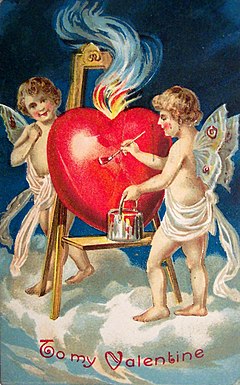
Also called Saint Valentine's Day or the Feast of Saint Valentine Observed by
Type Christian, romantic, cultural, commercial observance Significance Feast day of Saint Valentine; the celebration of love and affection Observances Sending greeting cards and gifts, dating, church services, novenas Date
(fixed by the Western Christian Church)
(fixed by the Eastern Orthodox Church)
(fixed by the Eastern Orthodox Church)Frequency Annual Part of a series on Love 
Saint Valentine[edit]
History[edit]
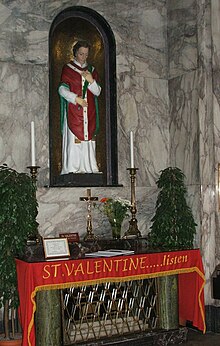
Legends[edit]
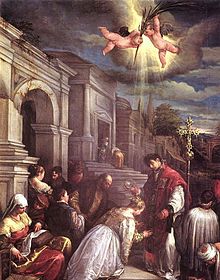
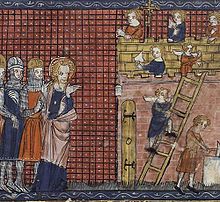
Folk traditions[edit]
Connection with romantic love[edit]
Possible ancient origins[edit]
Season’s Greetings

(1 background)
Valentine’s Day

(3 backgrounds)
Valentine's Day 
Also called Saint Valentine's Day or the Feast of Saint Valentine Observed by
Type Christian, romantic, cultural, commercial observance Significance Feast day of Saint Valentine; the celebration of love and affection Observances Sending greeting cards and gifts, dating, church services, novenas Date
(fixed by the Western Christian Church)
(fixed by the Eastern Orthodox Church)
(fixed by the Eastern Orthodox Church)Frequency Annual Part of a series on Love 
Saint Valentine[edit]
History[edit]

Legends[edit]


Folk traditions[edit]
Connection with romantic love[edit]
Possible ancient origins[edit]
Playing Xmas

(1 background)
Copyright (c) 2007. Anoop Menon
p3textractor filename.p3t [destination path]Replace filename with the name of the p3t file, and replace [destination path] with the name of the folder you want the files to be extracted to. A destination path is not required. By default it will extract to extracted.filename.Christmas #2

(1 background)
Christmas 
Also called Noël, Nativity, Koleda, Xmas Observed by Christians, many non-Christians[1][2] Type Christian, cultural, international Significance Commemoration of the nativity of Jesus Celebrations Gift-giving, family and other social gatherings, symbolic decoration, feasting Observances Church services Date Related to Christmastide, Christmas Eve, Advent, Annunciation, Epiphany, Baptism of the Lord, Nativity Fast, Nativity of Christ, Old Christmas, Yule, St. Stephen's Day, Boxing Day Etymology[edit]
Other names[edit]
Nativity[edit]

History[edit]
Early and medieval era[edit]
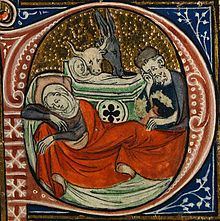
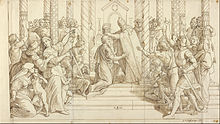
17th and 18th centuries[edit]
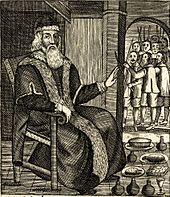
19th century[edit]

Kunoichi Xmas

(1 background)
Copyright (c) 2007. Anoop Menon
p3textractor filename.p3t [destination path]Replace filename with the name of the p3t file, and replace [destination path] with the name of the folder you want the files to be extracted to. A destination path is not required. By default it will extract to extracted.filename.Christmas 2007 II
Christmas 2007

(2 backgrounds)
Copyright (c) 2007. Anoop Menon
p3textractor filename.p3t [destination path]Replace filename with the name of the p3t file, and replace [destination path] with the name of the folder you want the files to be extracted to. A destination path is not required. By default it will extract to extracted.filename.Christmas 1.0

(1 background)
Copyright (c) 2007. Anoop Menon
p3textractor filename.p3t [destination path]Replace filename with the name of the p3t file, and replace [destination path] with the name of the folder you want the files to be extracted to. A destination path is not required. By default it will extract to extracted.filename.



